
Bromus is a large genus of grasses, classified in its own tribe Bromeae. They are commonly known as bromes, brome grasses, cheat grasses or chess grasses. Estimates in the scientific literature of the number of species have ranged from 100 to 400, but plant taxonomists currently recognize around 160–170 species.

Bromus diandrus is a species of grass known by the common names great brome and "ripgut brome".

Bromus sterilis is an annual or biennial species of bromegrass known as barren brome, poverty brome, and sterile brome.

Bromus secalinus is a species of bromegrass known as rye brome. The specific epithet secalinus is Latin, meaning "rye-like". The fruits are hard, rounded glumes that appear superficially similar to the rye grain, which gives the brome its common and scientific name. The grass has a diploid number of 28.

Bromus madritensis is a species of brome grass known by the common name compact brome. The specific epithet madritensis refers to Madrid, Spain. It has a diploid number of 28.
Cornelius Lott Shear (1865–1956) was an American mycologist and plant pathologist. In 1908 he created the American Phytopathological Society. He was the first to describe the grass Bromus arizonicus.
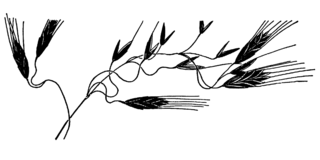
Bromus arenarius is a species of brome grass known by the common name Australian brome.

Bromus catharticus is a species of brome grass known by the common names rescuegrass, grazing brome, prairie grass, and Schrader's bromegrass. The specific epithet catharticus is Latin, meaning cathartic. The common name rescuegrass refers to the ability of the grass to provide forage after harsh droughts or severe winters. The grass has a diploid number of 42.

Bromus ciliatus is a species of brome grass known by the common name fringed brome. It is native to most of North America, including most of Canada, most of the United States except for some portions of the South, and northern Mexico. It is a plant of many habitats, including temperate coniferous forest. The specific epithet ciliatus is Latin for "ciliate", referring to the delicate hairs of the leaf blades.
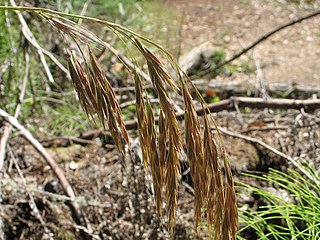
Bromus laevipes is a species of brome grass known by the common name Chinook brome.
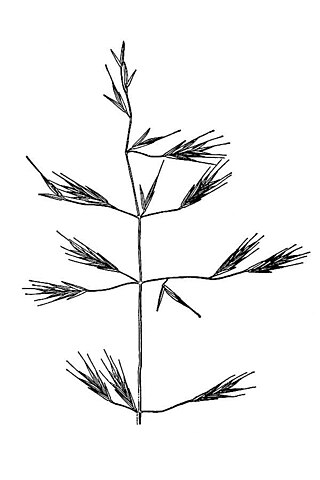
Bromus orcuttianus is a species of brome grass known by the common name Orcutt's brome.

Bromus vulgaris is a species of brome grass known by the common name Columbia brome.

Bromus maritimus is a species of brome grass known by the common names maritime brome and seaside brome. It is native to the coastal areas of California and Oregon.
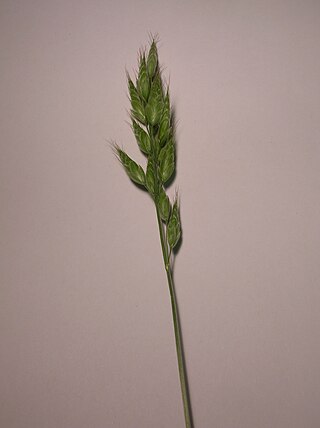
Bromus commutatus, the meadow brome, is an annual or biennial species of plant in the grass family Poaceae. In the United States it is known as hairy chess.
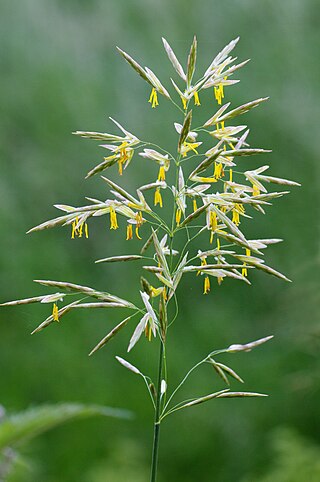
Bromus inermis is a species of the true grass family (Poaceae). This rhizomatous grass is native to Europe.

Bromus erectus, commonly known as erect brome, upright brome or meadow brome, is a dense, course, tufted perennial grass. It can grow to 120 centimetres (47 in). Like many brome grasses the plant is hairy. The specific epithet erectus is Latin, meaning "erect". The diploid number of the grass is 56.
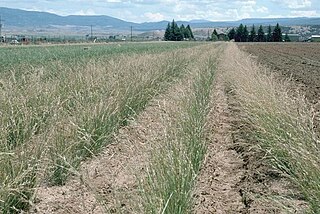
Bromus marginatus is a species of grass known by the common name mountain brome. It is native to western North America, and it is used widely for grazing animals and revegetating landscapes.

Bromus lanceolatus, the Mediterranean brome, large-headed brome or lanceolate brome, is a species of flowering plant in the family Poaceae. It is native to the Mediterranean, the Middle East, the Caucasus, Central Asia, Xinjiang in China, Afghanistan and Pakistan. A tetraploid, it does well in disturbed habitats and has been introduced to scattered locations in North America, South America, and central Europe.

















